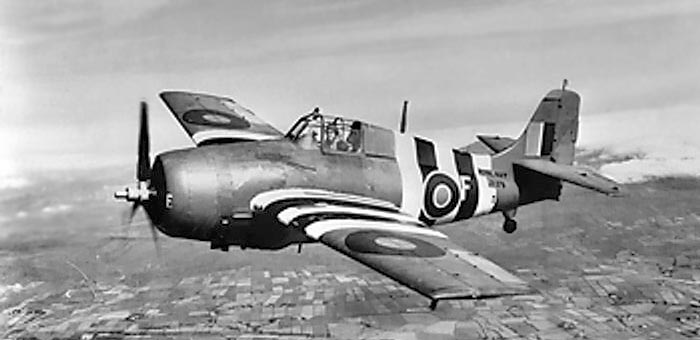Grumman F4F Wildcat. Photo. Characteristics.
USA
A type: single-engine fighter
Crew: one pilot
Designed on the basis of a biplane, proposed in competition with more modern monoplane F2A company Brewster, the plane "Uildket» (Wildcat - wildcat) was the result of research carried out by Grumman to create a marine fighter monoplane. Received the designation XF4F-2, this fighter lost to rival companies "Brewster» (Brewster) in flight tests of the excellent flight qualities of the latter.
Nevertheless, Grumman, by March 1939, redesigned its prototype into a significantly improved XF4F-3, equipped with a more powerful Twin Wasp engine with a two-stage turbocharger, increased the wingspan and redesigned its tail. After flight tests, the Navy immediately ordered 78 aircraft F4F-3, which they dubbed "Wildcat". Entering the Navy at the end of 1940, the Wildcat aircraft proved to be a worthwhile rival to the Japanese aircraft AbM Zero during the great battle of aircraft carriers in the Coral Sea and at Midway in 1942, following the invasion of the island of Guadalcanal.

At this stage of the war, General Motors (GM) began manufacturing the aircraft F4F-3, which it gave the designation FM-1. At the end of 1943, GM switched to the production of FM-2 aircraft, which used the R-1820-56 "Cyclone" engines with the turbocharged company "Wright" instead of the outdated "Twin Wasp" engine. This increased the maximum speed and ceiling by almost 50 percent compared to the FM-1 aircraft. By the time the production was completed in August 1945, no less than 4467 FM-2 aircraft were built. Of the 19 "Wildcat" aircraft that have survived to this day, all are in a state of airworthiness and, except for two, are based in the United States.
Basic data
Dimensions:
- Length: 8,76 m
- Wingspan: 11,58 m
- Height: 2,81 m
The weight:
- BLANK: 2612 kg
- Maximum take-off: 3607 kg
Aircraft performance characteristics:
- Maximum speed: 512 km / h
- Range: 1239 km
- Powerplant: Pratt-Whitney R-1820-8I Twin Wasp engine (on F4F-4 / FM-1 aircraft) or Wright R-1820-56 Cyclone engine (on FM-2 aircraft )
Power: 1200 l. from. (895 kW) and 1350 l. from. (1007,1 kW), respectively,
Date of first flight:
- 2 September 1937 years
The surviving airworthy modifications:
- F4F-3 and FM-2 / -2P

















